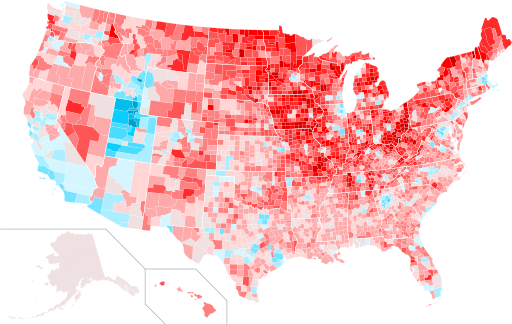
Please help us spread the word and join us this Thursday, May 14, 2020 at 1 PM (EST) as Bill Johnson interviews Jim Simpson.
Call 231-924-4050 or email kimberly@americandecency.org for your Zoom link and/or phone number if you’d rather join by phone.
Every cloud has its silver lining, as they say. Here’s a bright side to ruminate on with this whole pandemic (or Dem panic, if you prefer) – think of all the election coverage we’ve missed out on over the past few months! I’ve been dreading the 2020 election since 2016, assuming that it would be non-stop back and forth mudslinging and name-calling, and so far there’s been comparably little of that, for which I am oh so grateful.
And as much as I hate to remind people about what will be happening in November, I am also loath to return the focus to the omnipresent topic of Covid-19 and the reaction thereto, but here I’m about to do both.
It occurred to me that in the ancient world – circa 2016 – there was much discussion about the veracity of the Electoral College. As we have often been reminded, Hillary Clinton won the popular vote in 2016, reminding Democrats, who hadn’t thought of it much since 2000, how much they hated that thing and this prompted the right to resuscitate the arguments for its existence – namely that it protects the representation of the more sparsely populated citizenry. When, as in Michigan, the dense metropolises vote one way and the rural population, which have vastly different priorities, votes the other, the city dwellers, which often outnumber the rural communities, would disenfranchise their fellow citizens, simply out of ignorance of what life is like outside of the city.
One example would be a bill which came up in Michigan a few years ago about hunting wolves in the Upper Peninsula. The people whose pets and livestock were being threatened by the wolves live 300 miles north of the majority of voters in the Detroit area whose closest encounter with a wolf is watching Balto. So, of course, the measure failed.
We can see exactly how this plays out on a bigger scale in the various states’ responses to the Coronavirus pandemic. Let’s look at the state of Illinois as an example. According to the New York Times’ interactive map, Illinois currently has the most Covid-19 cases outside of New York, with over seventy nine thousand in the entire state. Over fifty three thousand of those cases and 2,300 deaths are in Cook County, which is Chicago, and the vast majority of remaining cases are in the counties surrounding it.
At the opposite corner of the state from Chicago, with roughly 15,500 residents, Mercer County, Illinois, has had twelve cases of Covid and zero deaths. Many of the counties surrounding it have zero cases according to the Times’ map.
Of course, the people in Mercer county have much less trouble tripping over each other than the 5.2 million people who live within the 945 square miles of Cook County – and yet these two counties are treated exactly the same under Illinois’ governor’s order. Not only are you far less likely to come into contact with an infected person in a rural community, but if you were infected you’d be have far fewer people in your immediate vicinity to expose to it, thus a smaller infection and death rate.
The same could be said for every state, under a stay at home order – the outbreaks occur where people live on top of each other. By the way, the reason I used Illinois as an example is that a judge recently placed a restraining order on their governor’s authority to extend their state of emergency through May 30th. A state Representative for a rural district, Darren Bailey, had sued the governor, because his legal authority granted by a state of emergency lasted only thirty days, which expired on April 8. The order technically only applies to Rep Bailey, but it opens the door for others to follow him and provides legal precedent for future suits. According to the Federalist, “Bailey says he was hoping to push Pritzker into creating a ‘more realistic plan’ reflecting the fact that Illinois is such a diverse region, requiring different approaches for the mostly rural Downstate and metropolitan Chicago.”
Whatever the constitutionality of telling anyone they may not earn a living for themselves, the justification for these stay at home orders was that it would keep people safe and healthy. But the measures necessary to keep 29 people per square mile of Mercer County safe are certainly not the same measures required to keep the 5,686 people per square mile of Cook County safe.
In the same way, the next time the Electoral College is besmirched, remember that the interests of those rural citizens are very different from urban community interest, but are equally vital and valid.
The people who make the bread have different priorities than those who buy the bread.
To support our efforts, please click here or mail your gift to American Decency Association (ADA), PO Box 202, Fremont, MI 49412
American Decency Association is a member of the Evangelical Council for Financial Accountability.

Call us:
231-924-4050Email us:
info@americandecency.orgWrite us:
American Decency AssociationCopyright 2025 American Decency